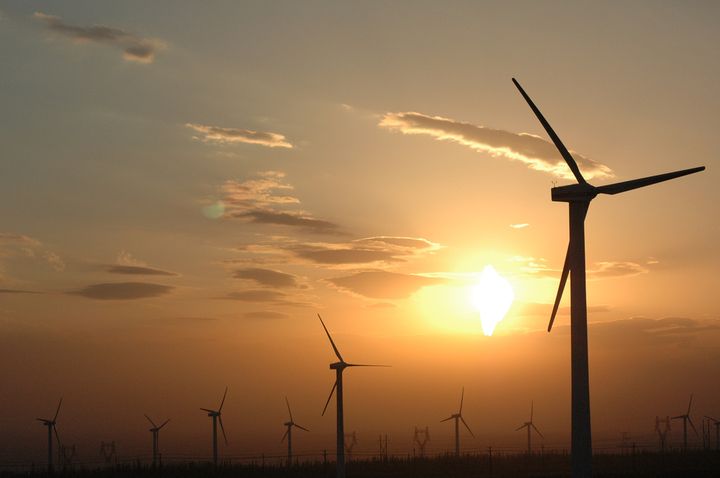
Don't Discount the Power of Wind
Beyond solar power, which is considered to be the top dog of alternative energy, wind power has also been experiencing a surge of growth in recent years. Already, the industry supports thousands of jobs within the manufacturing and service sectors. And with prices dropping due to ongoing innovation and improvements made in the technology, it is set to occupy an ever-increasing share of the global market.
In fact, according to a report issued this past March by the Department of Energy, the growth of wind power in the United States could lead to even more highly skilled jobs in many categories. Titled "Wind Vision: A New Era for Wind Power in the United States", the document indicates that by 2050, more than 600,000 wind-related jobs could be supported, and that the industry itself could account for as much as 35% of the country's electrical production.
This is certainly an impressive prediction, but seems all the more plausible when you consider just how much wind power has grown in recent years. Currently, 4.5% of American demand for electricity is supplied by wind operations, which represents a three-fold increase since 2008. By the end of this decade, it is expected to more than double and reached 10%. At that rate of growth, a third of the market by mid-century is certainly not unreasonable.
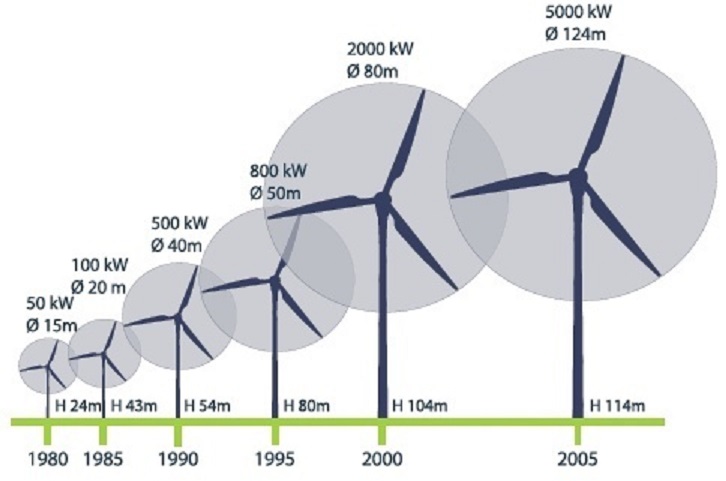
The use of wind power has expanded in part due to larger turbines that can capture higher-altitude, high-speed winds. Credit: cleantechnica.ca
Job Creation and Potential Capacity
To estimate the number of potential wind-related jobs by 2050, the Wind Vision Report relied on the Jobs and Economic Development Impact model maintained by the National Renewable Energy Laboratory. This tool is widely used by officials at the federal and state level to draft policy, as well as public utility commissions, potential project owners, and others estimating the potential economic impacts of new electricity generation projects.
The report says that up to 113 gigawatts of new wind power capacity can be installed nationwide by 2020, and up to 404 gigawatts by 2050, which would be enough to power nearly 100 million homes. It also states that, as wind grows, investments in wind energy could reach as much as $70 billion annually by 2050, at which point the industry would support 600,000 jobs.
It also indicates that as the industry continues to growth, demand will accelerate for workers who can develop, construct, operate, and maintain wind projects. Additional jobs will also be created at all points along the supply, assembly and distribution chain, as increasing demand requires additional skilled tradespeople, inspectors, and service workers.
At the end of 2013, wind power accounted for 61 gigawatts (GW) and employed 50,000 workers within some 500 wind manufacturing facilities. A twelve-fold increase in the number of people it employs is expected to spur local economic development, since these workers will be looking locally for homes, not to mention goods and services which will require that additional jobs be created to meet them.
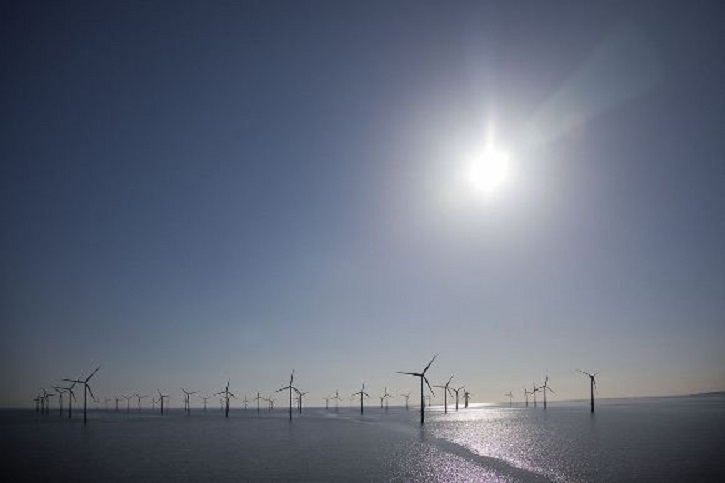
In Denmark, wind power accounts for 28% of electrical production and is cheaper than coal power. Credit: denmark.dk
Overcoming Roadblocks to Bring Wind to the Forefront
Building that much capacity over the next three decades is an ambitious but attainable goal, the report says. However, it will require that both local and the federal government do what they can to bolster wind's competitive position in the market vis a vis conventional power sources (aka. oil, natural gas and coal). Otherwise, the infrastructure supporting it may languish and fade and benefits it provides will be lost.
Another key requirement is for conventional energy industries to stop getting in the way. As the report indicates, the fossil fuel industry has been a significant barrier to development and needs to stop: "The fossil fuel industry, the most powerful vested interest in the world today, continues to do everything it can to obfuscate the science and slow down political progress," it says.
"Not their least pernicious influence is on the politicians they own, particularly those in the U.S. Congress – and in the places where the fossil fuel industry is a family business masquerading as a national government in the Persian Gulf – and in the places where fossil fuel exports have become a blunt political and military instrument to bludgeon recalcitrant neighbours into submission.”
However, given the increasingly competitive and profitable nature of wind power worldwide, resistance to more wide-scale adoption is not expected to last. Wind is now setting peak prices in wholesale energy markets worldwide and cutting into the revenues and profits of the fossil fuel industry. This changing picture is leading many to change their mind about the viability of alternative energy, and leading some nations to take the lead while others lag behind.
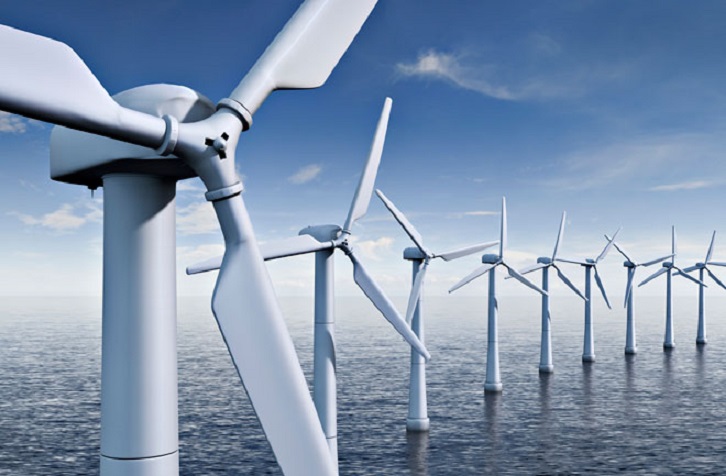
Japan plans to build an offshore array of 143 turbines, which will generate over a gigawatt of power. Credit: news.discovery.com
Wind Power in Other Parts of the World
Consider Denmark, where off-shore and on-shore wind power operations already account for 28% of electrical production. Combined with progressive policies, wind power has also become competitive with all other forms of energy, and is seen as the way of the future because it is stable and inexhaustible. Given their dedication and experience to the technology, the country is also expected to see a ten-fold increase in the use of wind power within the next decade.
Japan is also moving towards wind power as a major source of energy to replace the nuclear infrastructure that was damaged during the Fukushima Earthquake of 2011. Beginning in 2013, they announced plans to build 143 wind turbines offshore, producing a gigawatt of power, or about 21 percent of the total energy that was produced from the now-defunct nuclear power plant.
In addition, last year, the Global Wind Energy Council and Greenpeace International came together to publish a report titled "Global Wind Energy Outlook 2014". This report stated that worldwide, wind power could provide as much as 25 to 30% of global electricity supply by 2050. At the time of the report's writing, commercial installations in more than 90 countries had a total capacity of 318 gigawatts (GW), providing about 3% of the global supply of energy.
But, assuming that the current trend continues (and vested interests don't get in the way), the report projects that by 2030, wind power could reach 2,000 GW, supply up to 17 to 19% of global electricity, create over two million new jobs and reduce CO2 emissions by more than three billion tonnes a year. Two decades after that, the figures would increase by almost a full third, accounting for a full quarter or almost a third of all energy produced worldwide.
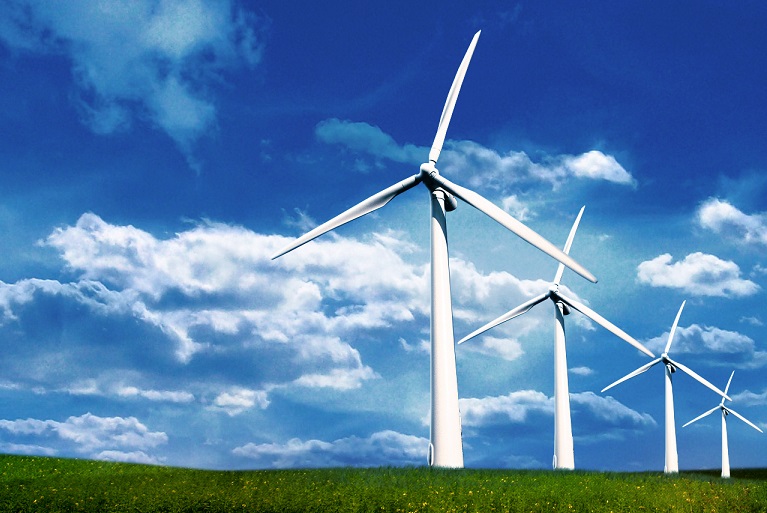
Recent reports by the GWEC/Greenpeace and the IEA indicate that wind power could supply 18% to 30% of global energy by 2050. Credit: cleantechnica.com
This is a more positive appraisal than the report released by the IEA in 2013. That report, titled "Technology Roadmap: Wind Energy – 2013 Edition", indicated that, based on current projections, wind power would account for 18% of global energy production by 2050. However, this represented a significant increase over their previous Roadmap report, issued in 2009, where they aniticipated that wind power would account for a 12% share by mid-century.
Hope for the Future of Wind Power
What can one conclude from all this? For starters, it is clear that the future of wind power and alternatives are uncertain. Much depends on current improvements and innovation continuing, and on a financial and regulatory environment that is friendly. However, the updated reports also seem to indicate that with each passing year, the projections get better. As the technology behind wind power improves, and adoption increases, the more likely it seems that it will have a controlling share of the market by 2050.
And let's not forget that in 2014, the IEA issued a report that stated how by mid-century, solar power could account for 25% of the market - thus becoming the largest single-supplier of global energy. Combined with the recent projections for wind power, this means that renewable energy could be providing up to, or even more than, half of the world's electrical needs. At a time when our impact on the planet is being considered as one of the greatest threats facing the global economy, food supply, and security, these projections are very encouraging indeed!
Top Image Credit: Chris Lim/Wikipedia Commons
Sources:
- energy.gov/windvision
- www.nrel.gov/analysis/jedi/
- denmark.dk/en/green-living/wind-energy/
- cleantechnica.com/2014/04/21/real-innovation-wind-energy/
- www.energyandpolicy.org/wind_energy_profitable_business
- energy.gov/eere/articles/wind-energy-supporting-600000-jobs-2050
- www.huffingtonpost.com/2015/03/12/us-wind-power-2050_n_6856666.html
- grist.org/climate-energy/wind-could-power-a-third-of-americas-electricity-by-2050/
- www.usatoday.com/story/news/nation/2015/03/12/obama-wind-power-report-energy-department/70160824/
- www.iea.org/publications/freepublications/publication/technology-roadmap-wind-energy---2013-edition.html
- www.desmog.ca/2014/10/23/wind-power-could-supply-25%25-global-electricity-if-fossil-fuel-industry-doesnt-get-in-way
- www.iea.org/newsroomandevents/news/2013/october/wind-power-seen-generating-up-to-18-of-global-power-by-2050.html
- www.iea.org/newsroomandevents/pressreleases/2014/september/how-solar-energy-could-be-the-largest-source-of-electricity-by-mid-century.html
